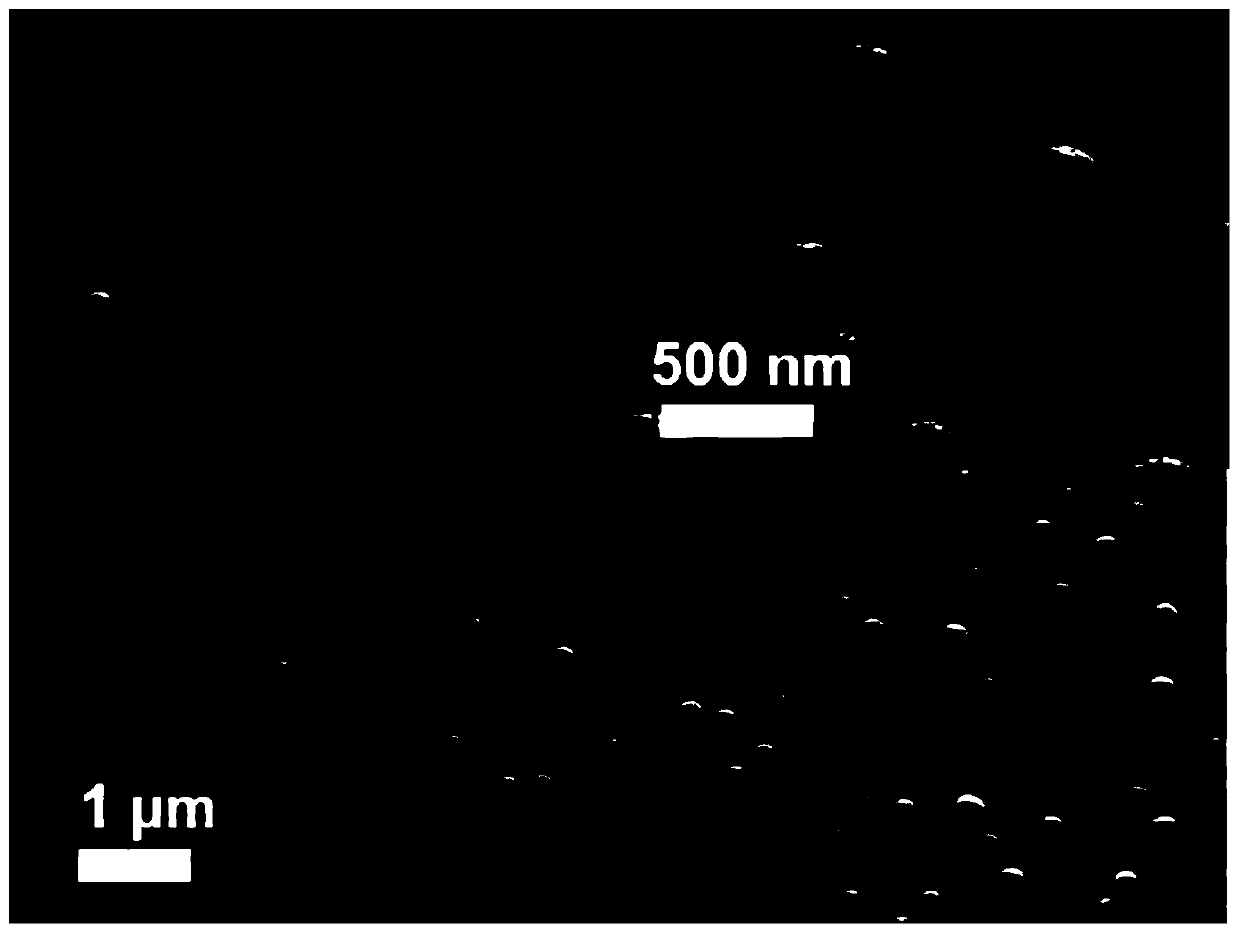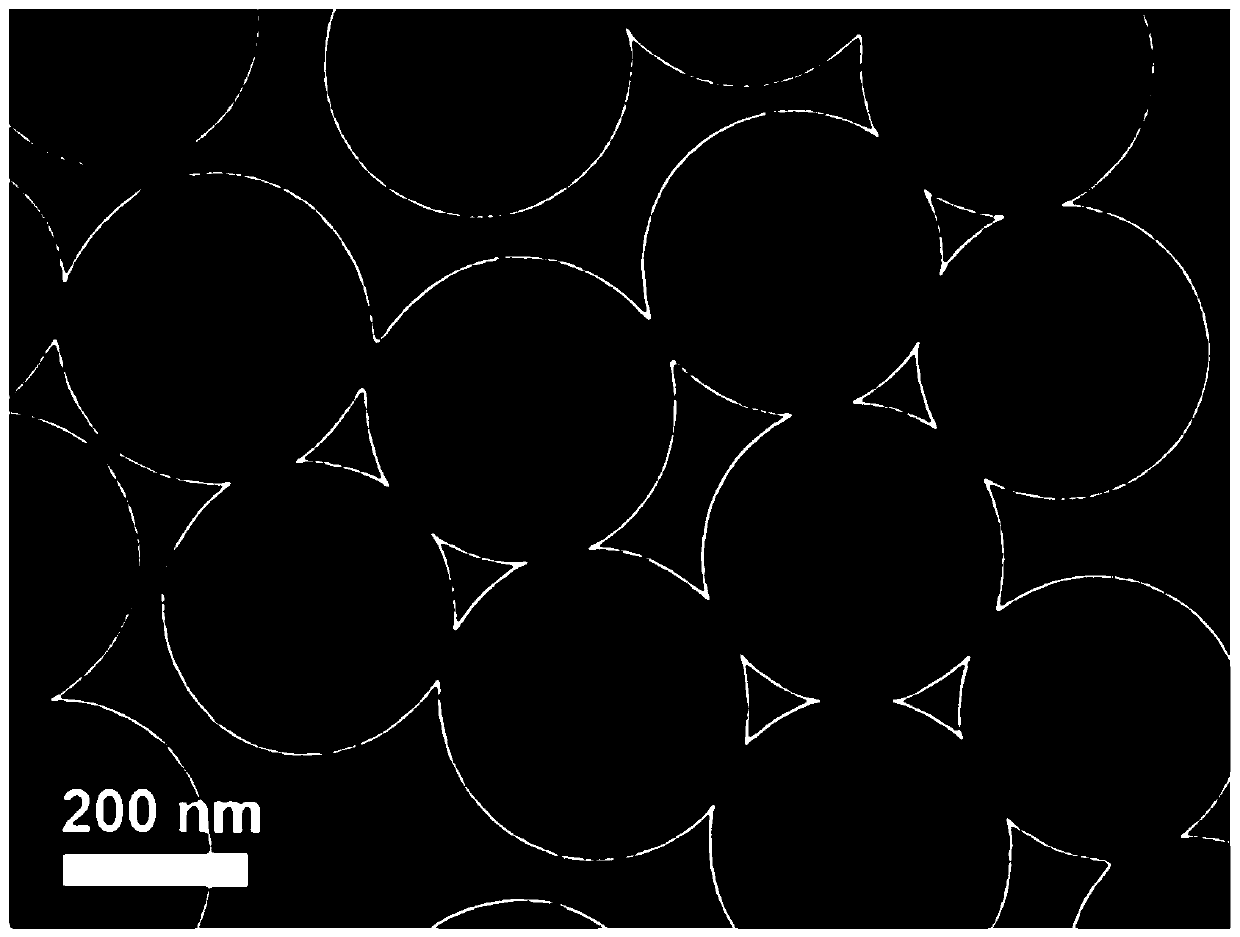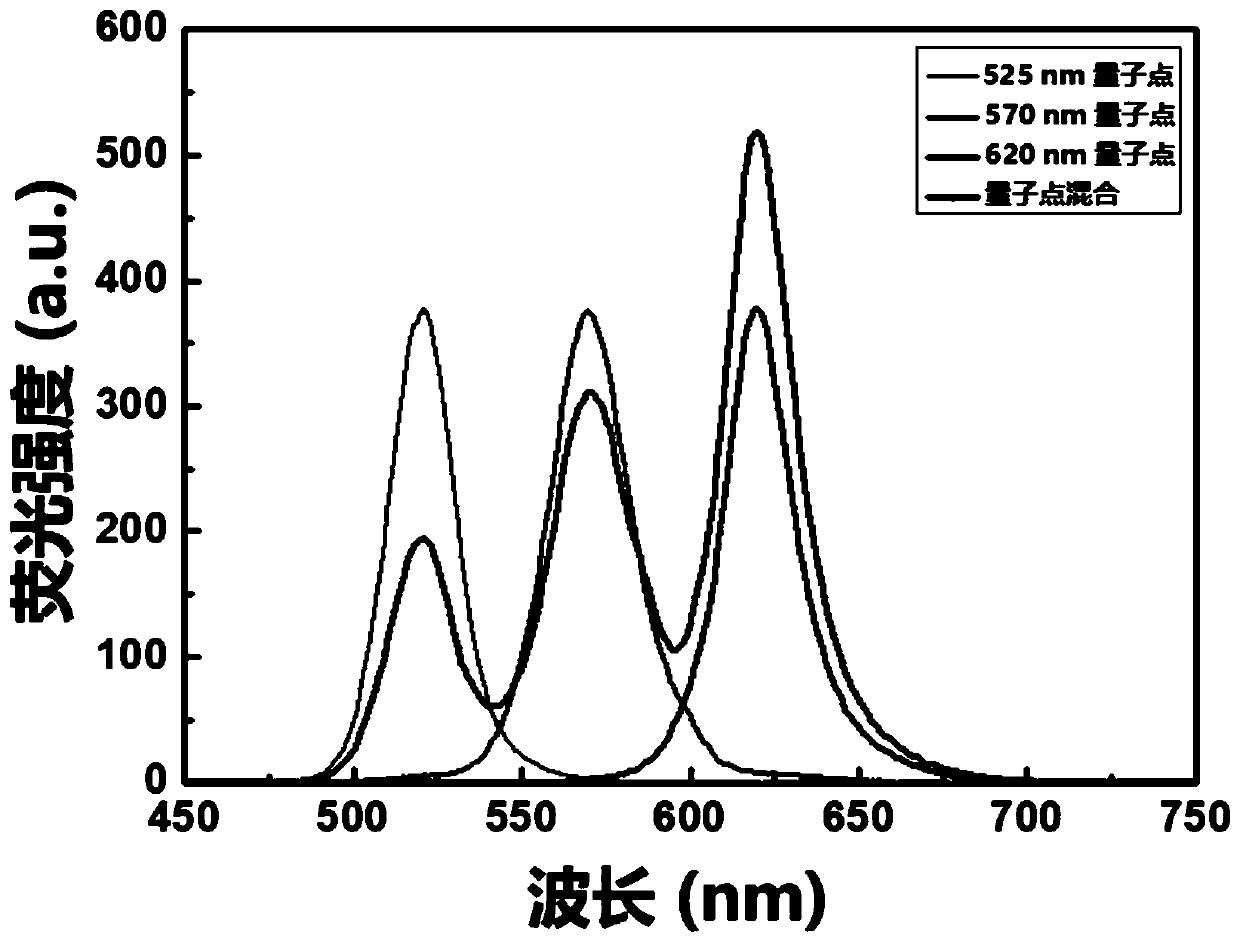Multivariate detection method based on quantum dot fluorescent nanospheres
A fluorescent nanometer and detection method technology, applied in fluorescence/phosphorescence, chemical instruments and methods, measurement devices, etc., can solve the problems of poor anti-fluorescence bleaching ability, emission spectrum tailing, poor stability, etc., and avoid fluorescence resonance energy transfer. effect, the effect of broad application prospects
- Summary
- Abstract
- Description
- Claims
- Application Information
AI Technical Summary
Problems solved by technology
Method used
Image
Examples
Embodiment 1
[0033] The quantum dot fluorescent nanospheres prepared in this embodiment are CdSe / ZnS fluorescent nanospheres, wherein the quantum dots are CdSe / ZnS quantum dots with an emission wavelength of 525nm, and the polymer is styrene-maleic anhydride copolymer (PSMA). The method is the SPG film emulsification-emulsion solvent evaporation method, and the specific preparation steps are:
[0034] 50mg of CdSe / ZnS quantum dots with an emission wavelength of 525nm and 1g of styrene-maleic anhydride copolymer (PSMA) were dissolved in 48mL of toluene to form a dispersed phase;
[0035] Dissolve 8g of sodium dodecyl sulfate (SDS) in 1600mL of ultrapure water to form a 0.5wt% SDS solution as the continuous phase;
[0036] Adjust the nitrogen pressure so that the dispersed phase is dispersed into the continuous phase through the SPG membrane with a pore size of 0.3 μm under a pressure of 120 kPa to form a microemulsion;
[0037] After stirring for 24 hours, the toluene was volatilized, the ...
Embodiment 2
[0042] The quantum dot fluorescent nanospheres prepared in this embodiment are CdSe / ZnS fluorescent nanospheres, wherein the quantum dots are CdSe / ZnS quantum dots with an emission wavelength of 570nm, and the polymer is styrene-maleic anhydride copolymer (PSMA). The method is the SPG film emulsification-emulsion solvent evaporation method, and the specific preparation steps are:
[0043] 50mg of CdSe / ZnS quantum dots with an emission wavelength of 570nm and 1g of styrene-maleic anhydride copolymer (PSMA) were dissolved in 48mL of toluene to form a dispersed phase;
[0044] Dissolve 8g of sodium dodecyl sulfate (SDS) in 1600mL of ultrapure water to form a 0.5wt% SDS solution as the continuous phase;
[0045] Adjust the nitrogen pressure so that the dispersed phase is dispersed into the continuous phase through the SPG membrane with a pore size of 0.3 μm under a pressure of 120 kPa to form a microemulsion;
[0046] After stirring for 24 hours, the toluene was volatilized, the ...
Embodiment 3
[0050] The quantum dot fluorescent nanospheres prepared in this embodiment are CdSe / ZnS fluorescent nanospheres, wherein the quantum dots are CdSe / ZnS quantum dots with an emission wavelength of 620nm, and the polymer is styrene-maleic anhydride copolymer (PSMA). The method is the SPG film emulsification-emulsion solvent evaporation method, and the specific preparation steps are:
[0051] 50mg of CdSe / ZnS quantum dots with an emission wavelength of 620nm and 1g of styrene-maleic anhydride copolymer (PSMA) were dissolved in 48mL of toluene to form a dispersed phase;
[0052] Dissolve 8g of sodium dodecyl sulfate (SDS) in 1600mL of ultrapure water to form a 0.5wt% SDS solution as the continuous phase;
[0053] Adjust the nitrogen pressure so that the dispersed phase is dispersed into the continuous phase through the SPG membrane with a pore size of 0.3 μm under a pressure of 120 kPa to form a microemulsion;
[0054] After stirring for 24 hours, the toluene was volatilized, the ...
PUM
 Login to View More
Login to View More Abstract
Description
Claims
Application Information
 Login to View More
Login to View More - R&D
- Intellectual Property
- Life Sciences
- Materials
- Tech Scout
- Unparalleled Data Quality
- Higher Quality Content
- 60% Fewer Hallucinations
Browse by: Latest US Patents, China's latest patents, Technical Efficacy Thesaurus, Application Domain, Technology Topic, Popular Technical Reports.
© 2025 PatSnap. All rights reserved.Legal|Privacy policy|Modern Slavery Act Transparency Statement|Sitemap|About US| Contact US: help@patsnap.com



